George W. Hart
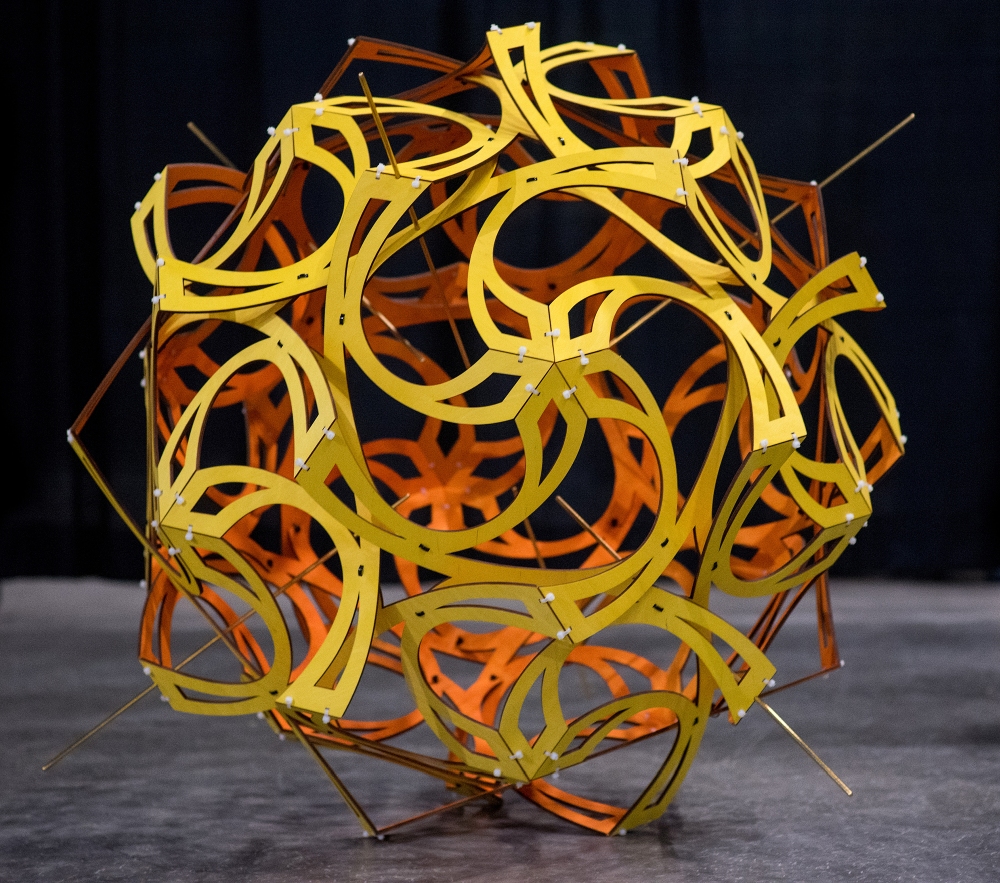
SNO-Ball celebrates the
Nobel-prize-winning research at the Sudbury
Neutrino Observatory, which showed that neutrinos have
mass. It was commissioned for Queens University in Kingston,
Ontario on the occasion of its 175th Anniversary. The
design is evocative of a swirling ball of fluid, meant to
symbolize both the sun, where neutrinos originate, and the
sphere of heavy water central to the detector. The 1.5
meter diameter sculpture is composed of thirty planar wooden
components (arranged with icosahedral symmetry and twelve 5-fold
swirls) plus six brass rods that pass through radially (arranged
with the symmetry of a cube's right angles). The interplay
of these two symmetries take some time to understand.
.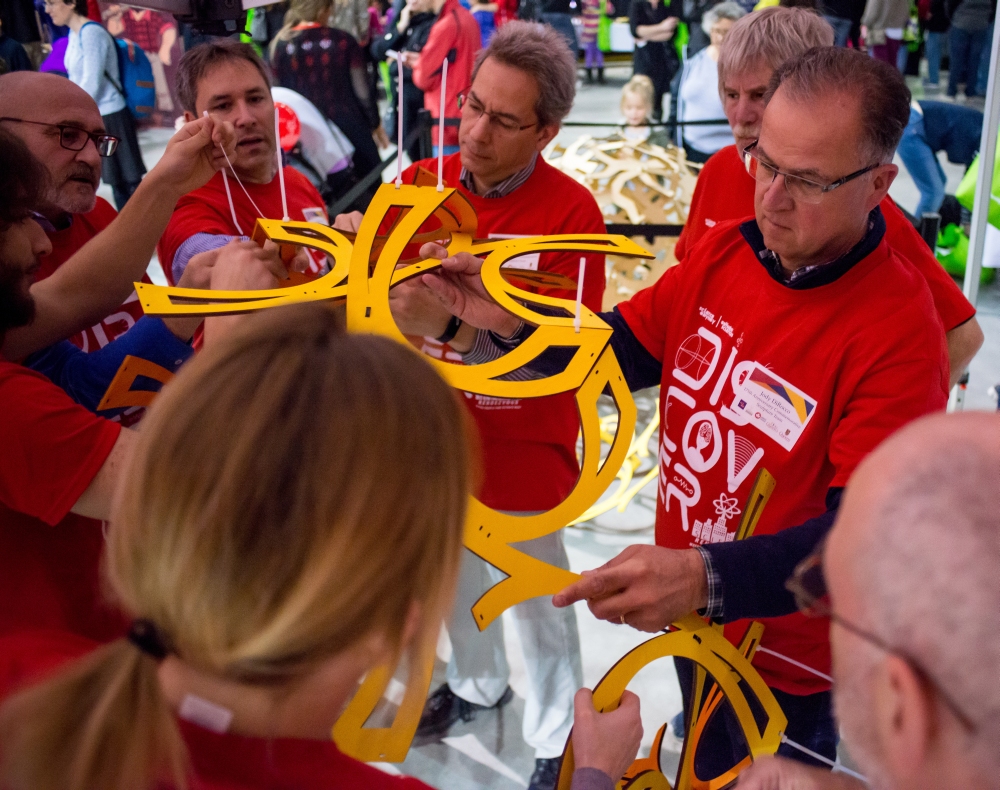
We assembled the sculpture as a group project
at Science
Rendezvous, May 13, 2017, in Kingston. This is
a public outreach event that exposes thousands of people to
ideas from science and mathematics. The laser-cut Baltic
birch plywood parts are yellow on the outside and orange on the
inside.
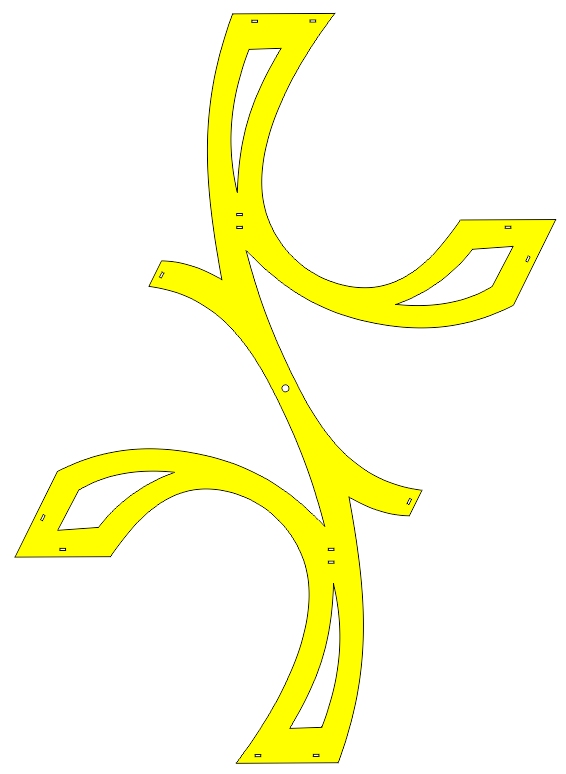
If you study the sculpture for a while, you will
see that each piece is a flat shape that looks like this (but
only six of the parts have the small central hole shown
above). This derives from an
earlier sculpture I made while exploring ideas for this
commission, but there are sixty additional connection points
here around the 3-fold axes, which I added to ensure rigidity at
this larger scale.
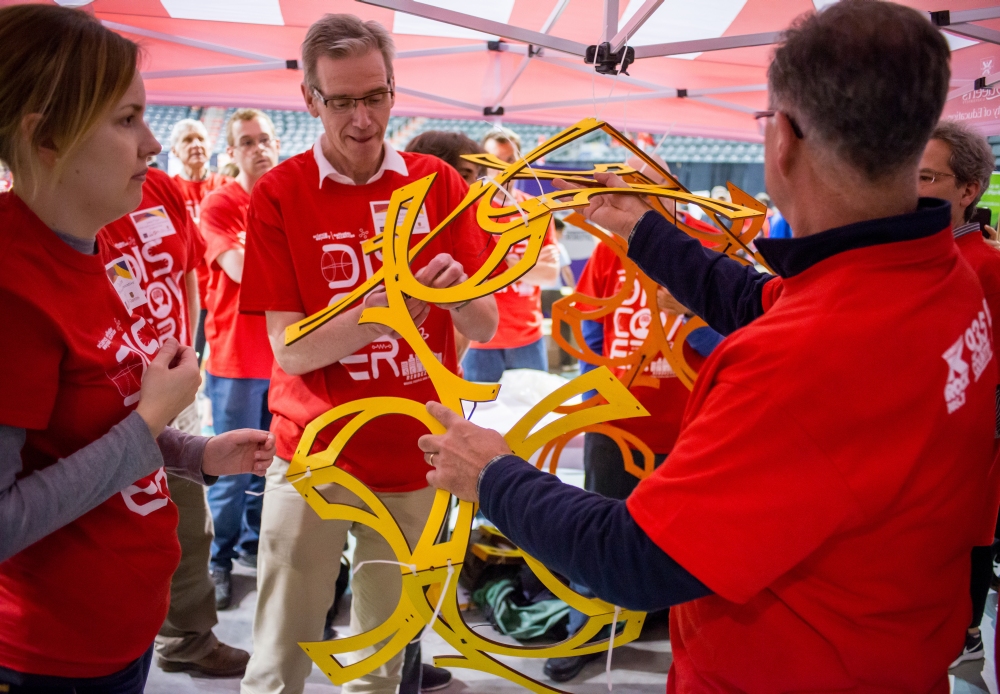
During the assembly, we had to keep track of
three subtly different part types. Six have the central
circular hole mentioned above, twelve have no hole, and twelve
have a semi-elliptical half-hole on one edge, as can be seen
near the bottom of the image above.
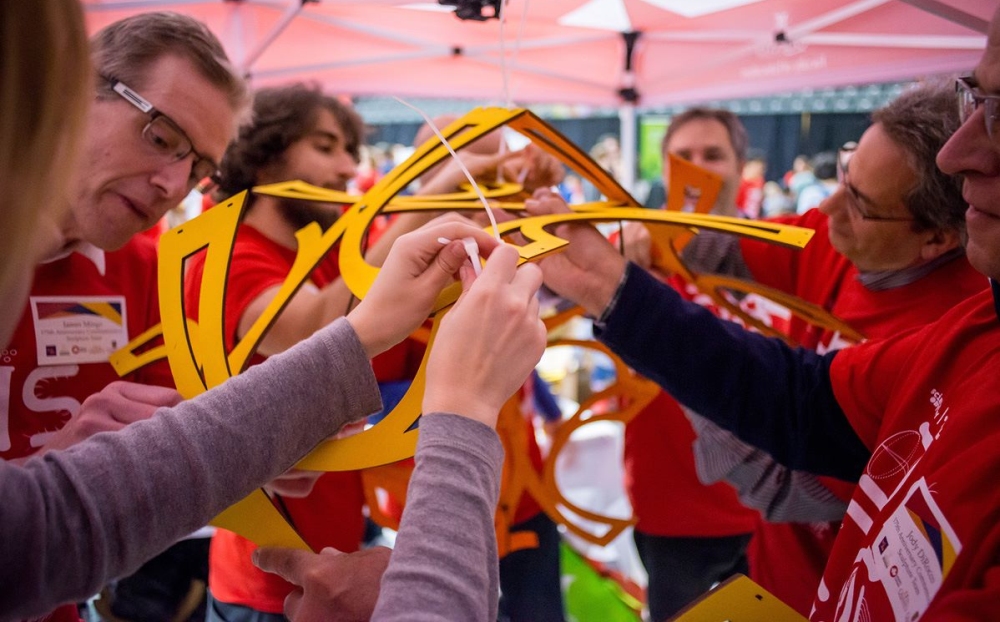
The parts join together with cable ties. White ones are used on the exterior connections and black ones around the 3-fold axes.
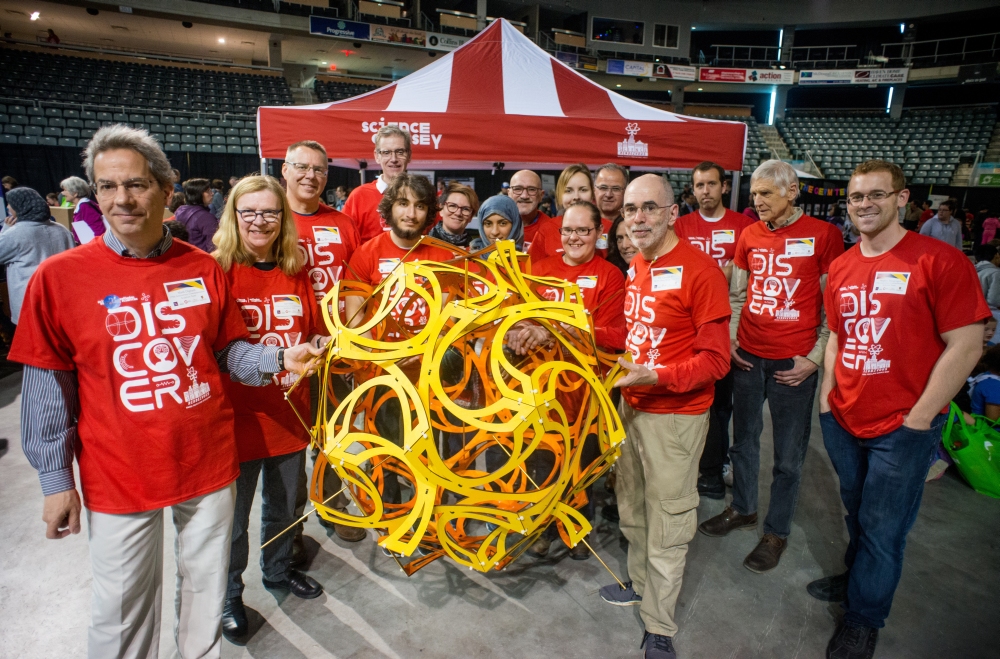
After the wooden components were all tightly
connected, I clipped the tails of the cable ties and inserted
the brass rods
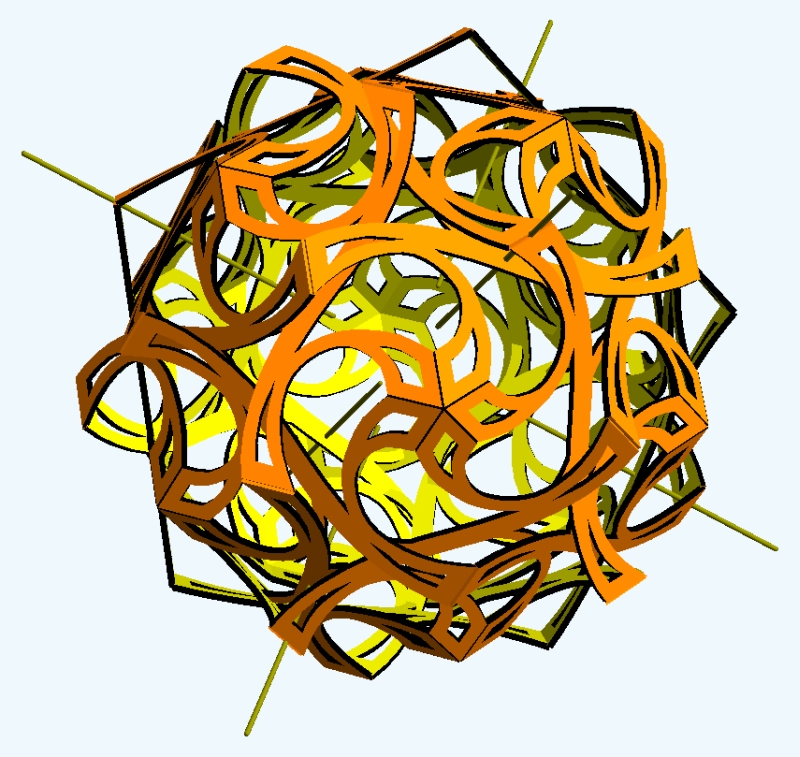
Before building anything, I made a variety of
virtual models, exploring a range of design ideas. This
rendering is how I envisioned it at one stage. Note that
the orange and yellow colors are reversed from the final
version. (It is also of the mirror-image
handedness.) You can get a better sense of it's structure
from this animation.
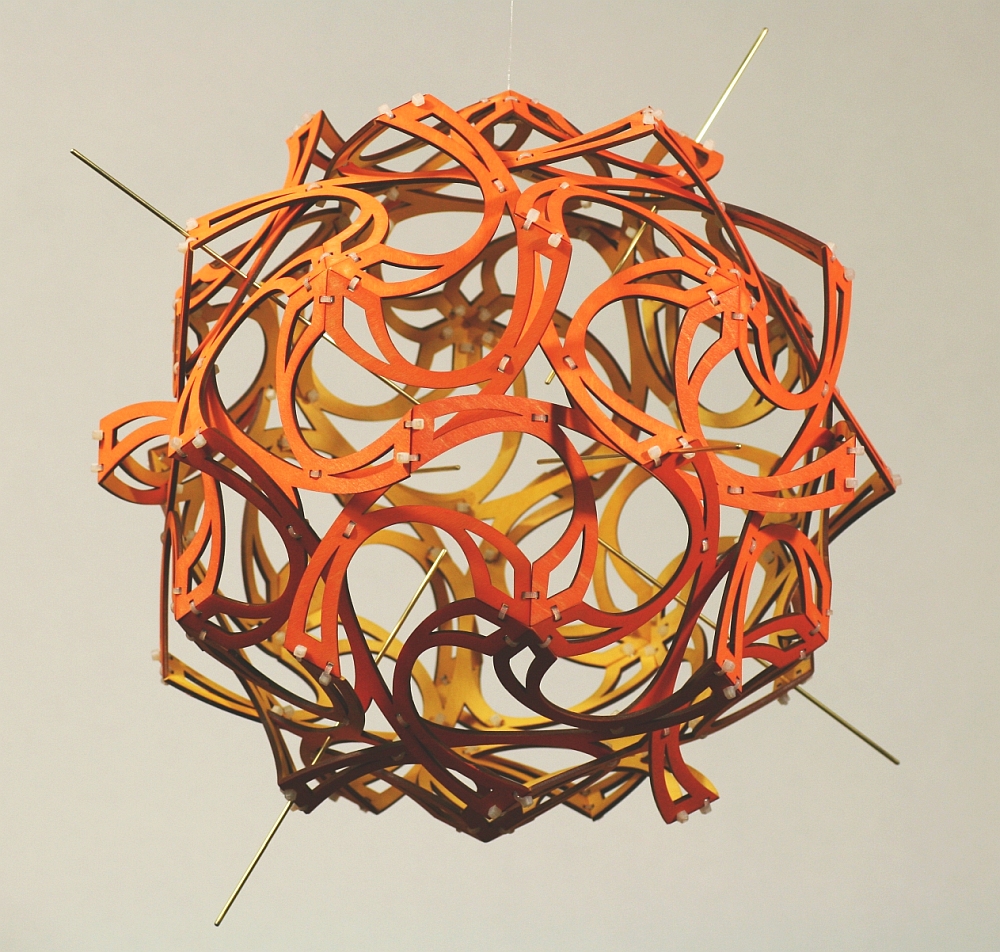
This is a one-third scale model I made to test
out everything and be sure I would like it, before laser-cutting
the larger pieces for the full-scale version. (It still has the
earlier color scheme and reversed handedness)
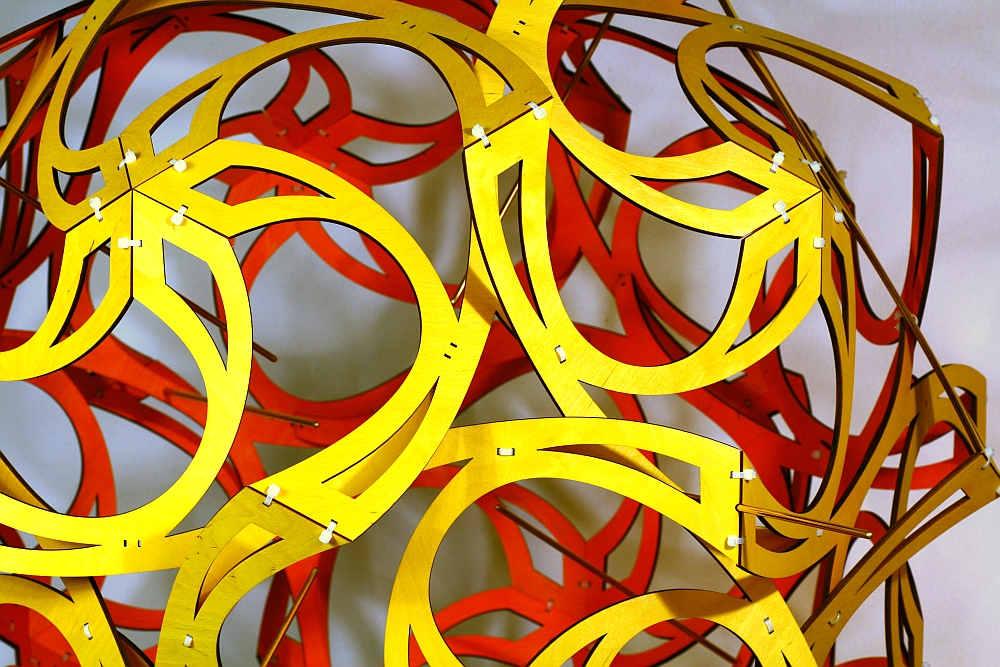
Here is a test-fit of the full-size parts at my
studio in NY, after staining and finishing the wood and beveling
all the mating edges to the proper dihedral angles. At this
point, I was still in the process of adding the remaining cable
ties. After some experimenting, I eventually decided on
black ties (which last longer) for some of the
connections. Note that plastic cable ties should be
replaced every decade or so, which can provide an activity for
future anniversary parties.
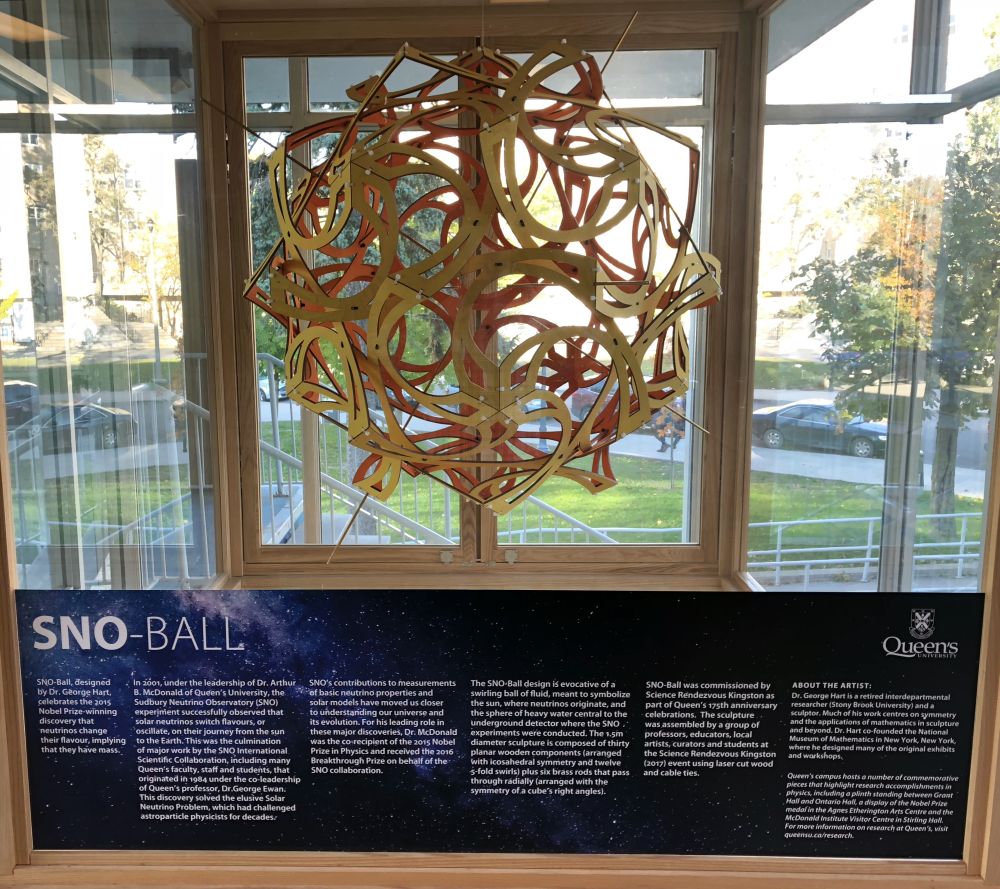
SNO-Ball is now installed behind glass in Stirling Hall at Queens University, Kingston, Ontario.
Thank you to everyone who collaborated on this project, especially Lynda Colgan at Queens University, who somehow made everything happen.
This design document gives some background about my thinking and how the sculpture relates to the SNO project.